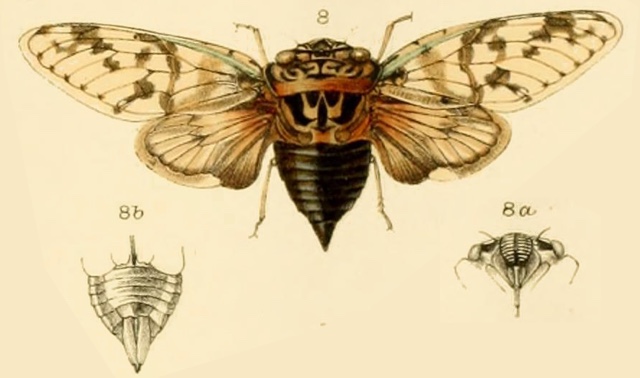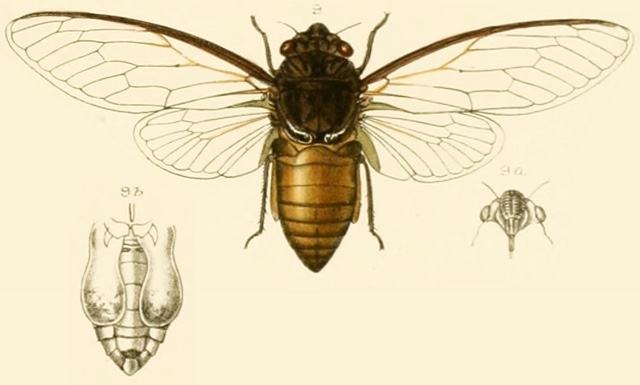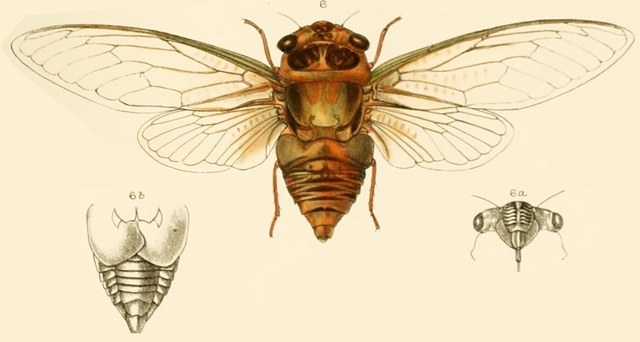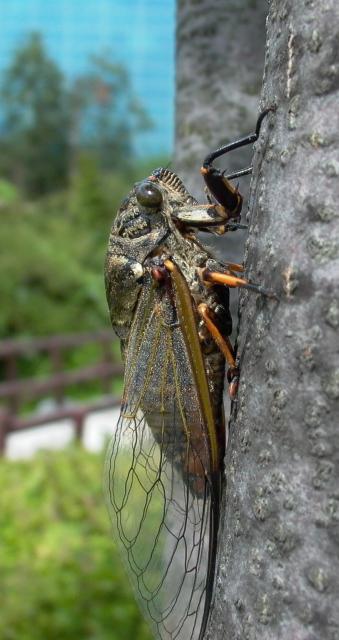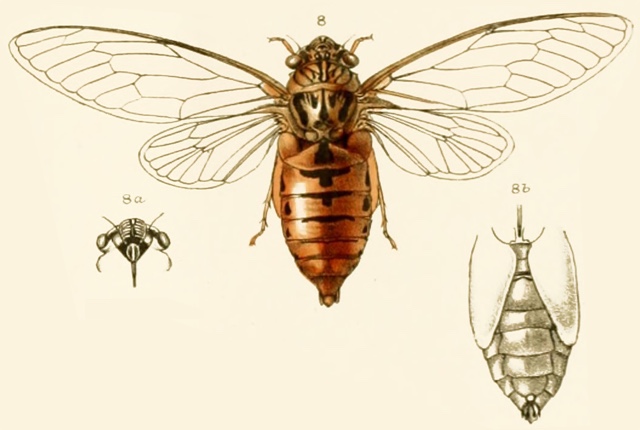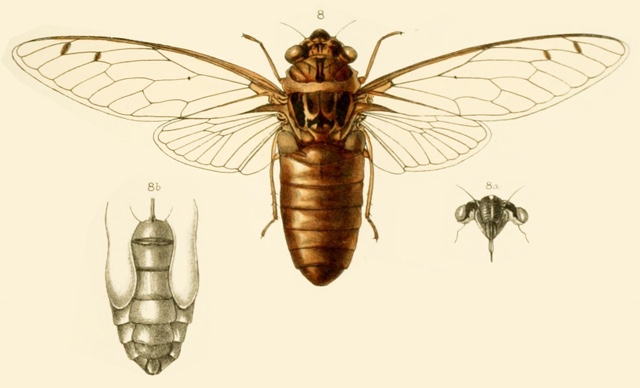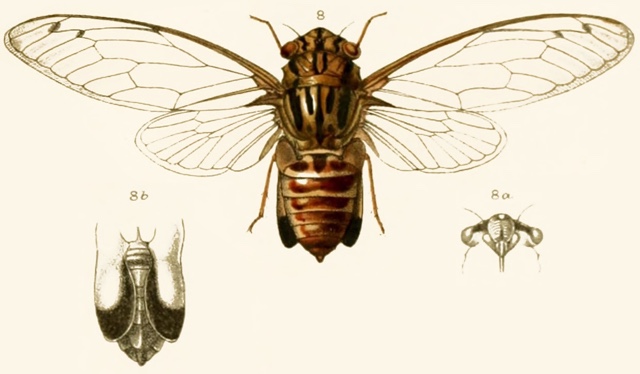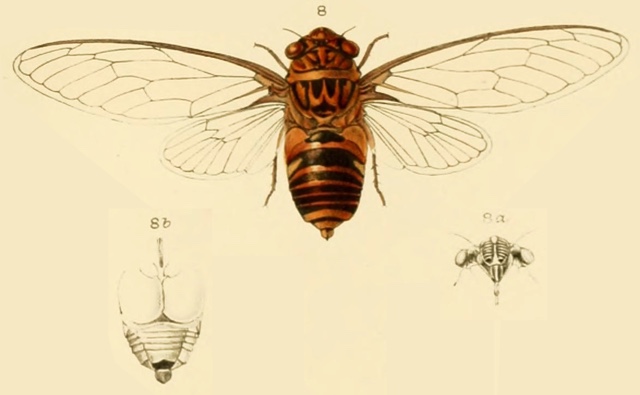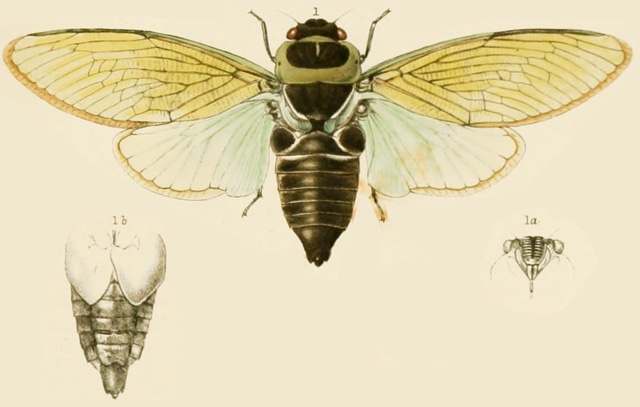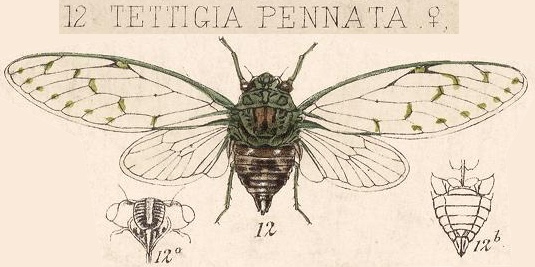Tibicina casyapae (Distant, 1888) is a cicada found in India and Afganastan.
Tibicina casyapae was formerly known as Tibicen casyapae. It was moved from the Tibicen Latreille, 1825 genus to the Tibicina Kolenati, 1857 genus.
Scientific classification:
Family: Cicadidae
Subfamily: Cicadettinae
Tribe: Tibicinini
SubTribe: Tibicinina
Genus: Tibicina
Species: Tibicina casyapae (Distant, 1888)
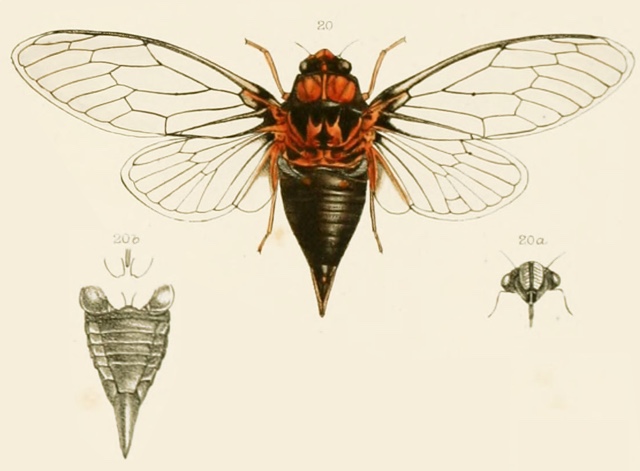
[female] Head black; margins of front, ocelli, and a small central basal spot, dull reddish; eyes ochraceous. Pronotum dull reddish, the margins and two central longitudinal lines black. Mesonotum black; two central ” antler “- shaped fasciae, the lateral margins, and the basal cruciform elevation, dull reddish, the anterior angles of the last black. Abdomen above black. Body beneath black, somewhat greyishly pilose; face red, its central longitudinal sulcation black; rostrum black; legs reddish, the femora streaked with black beneath.
Tegmina and wings pale hyaline, their bases dull reddish, the venation blackish; the costal membrane of tegmina ochraceous.
The face is large, but laterally compressed and strongly striated, with a profound central longitudinal sulcation. The rostrum about reaches the intermediate coxae; the legs are robust, and the anterior femora have a strong spine beneath at apex and a similar spine near base.
Long. excl. tegm. [female] , 35 millim. Exp. tegm. 90 millim.
References:
- The illustration, description and location information comes from A Monograph of Oriental Cicadas by W. L. Distant. 1889-1892. Read it on the Biodiversity Heritage Library website.
- Species name information comes from Allen Sanborn’s Catalogue of the Cicadoidea (Hemiptera: Auchenorrhyncha).
- Nast, J., 1972a. Palaearctic Auchenorrhyncha (Homoptera). An annotated check list. Warszawa: Polish Sci. Publ. 550 p. (records).
